
November 1, 2007
The following is up and active on the Yahoo home page. Click on the direct link below noted at their “Cryptomundo” title for all of the hyperlinks Yahoo has added to the exchange. This is a direct copy of their interview, which they have given me permission to post. I added a few familiar Cryptomundo photos to keep your retro visual interests occupied.- LC

Cryptomundo
by Jon Brooks
Early last year, we took a look at Cryptomundo, a site that scours the Web for news of “the most elusive and rare animals (cryptids) on this planet Earth.” Since then, sightings of such mysterious beasties as beaked whales, Chinese lake monsters, and Tasmanian Tigers have only heated up, as have the postings of Cryptomundo’s intrepid bloggers: Loren Coleman, Craig Woolheater, John Kirk, and Rick Noll.
When we asked Loren Coleman some questions about the site and his chosen field, he talked to us about how the media’s been hoaxed, the never-ending popularity of Bigfoot, and why he doesn’t “believe” in cryptozoological species…
Can you define the term, cryptozoology, for us?
Cryptozoology comes from the root words, (which) are Greek: “kryptos” for “hidden,” “unknown,” “enigmatic;” plus “zool” for “animal” and “logos” for study. Thus, literally, “the study of hidden animals.” The animals are hidden, but not totally “unknown” or “mythical,” per se.

To be part of cryptozoology, the animals have to be “ethnoknown,” known by the local peoples and natives, even if not recognized by science and formal zoology yet. The word was first coined in the 1940s by zoologist Ivan T. Sanderson, then re-invented in the late 1950s by zoologist Bernard Heuvelmans. Sanderson (a Scottish scientist who became an American) and Heuvelmans (a Belgian who lived in France) are regarded as the godfathers of cryptozoology. I knew Heuvelmans and Sanderson, and I now work fulltime as a cryptozoologist.
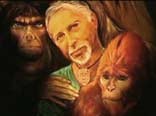
There are no degrees given in the field yet, but credit courses have been given at some universities and there is a growing body of people working fulltime just as cryptozoologists.
Why start a site on cryptozoology?
A few interested people became intrigued by the idea of an active, lively, more intelligent use of the Internet for cryptozoological studies. A blog that would share news and commentary on cryptozoology seemed the obvious solution to a void that existed. Cryptomundo began in September 2005.
In your opinion, what is the crypto-creature for which the most evidence exists?
We don’t generally call them “crypto-creatures” but use the word “cryptid,” the word used in cryptozoology to denote an unknown, yet-to-be discovered animal. Unknown, cryptic beaked whales are probably the animals with the most evidence that supports the fact they will be “discovered soon.”

But I bet you were wanting a more sensational choice? Most people make the mistake of thinking that cryptozoologists are only chasing the big three—Bigfoot, Loch Ness Monsters, and Abominable Snowmen. But there are about 200 active different cryptid searches taking place at any one time around the world.
People in Australia may be after the Thylacine, expeditions in Africa will soon be looking for Mokele-Mbembe, and Russians are pursuing the Almas. As far as a dramatic discovery, I think Bigfoot will be overshadowed in the next ten years with the finding a new great ape, Orang Pendek, in Sumatra.
Please click on the image of the Orang Pendek cast (above) for a larger version.
Can you tell us which ones you just don’t believe in?
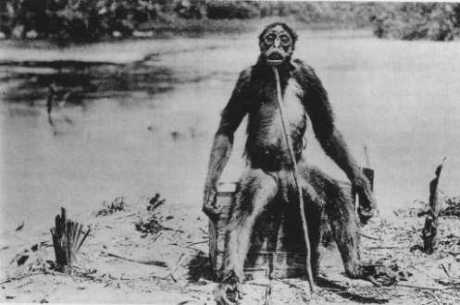
I do not “believe” in any cryptozoological species, in general, because “belief” is about faith and religion. There is a healthy level of skepticism in cryptozoology, and in general, 80% of the reports and sightings presented are mistakes, misidentifications, mundane animals, and a few outright hoaxes. I accept or deny the evidence based upon an analysis that confirms for me there is something of value here.
In general, it seems too many people (think) that cryptozoologists are interested in unicorns and fairies, and we know those are myths that do not belong in cryptozoology.
Searches on “China Lake Monster” recently surged on Yahoo! Are you seeing a lot of interest in that?
Different cryptids experience different waves of popularity. At the beginning of the summer, the video from Loch Ness got many websites excited about lake monster sightings, and the recent Chinese video seems to have extended that interest. I see interest continuing (in) lake monsters through the end of the year, especially with the release of “Waterhorse.”
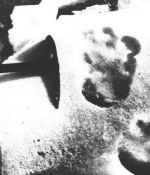
Then, late in 2008 and 2009, I see a re-awakening of interest in Abominable Snowmen expeditions and Yeti movies. There are predictable human interest cycles at work here, especially around significant dates and historical anniversaries.
Is there any one creature that drives the most traffic to the site?
That’s an easy one. Bigfoot is the number one most popular topic for people, and our readers love to debate the Patterson-Gimlin footage (40th anniversary is on Oct. 20, 2007). The second most popular topic (occurs) any time a “mystery photo” is posted.

One early 20th century “mystery fish” postcard has generated over 400 comments and almost two million people reading those posts alone.
What’s the best known hoax in the cryptozoology field?
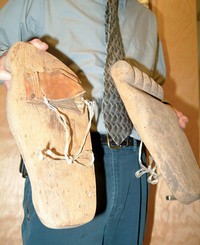
I’m going to turn this question on its head and tell you the real “best known hoax” in cryptozoology is the one played on the media. It was incredible to watch the media declare “Bigfoot is dead” based upon the late Ray Wallace’s family retelling his yarns that “he was Bigfoot.” Wallace had always been a teller of tall tales, and when his family merely continued his tradition, with fake footprints that did not even match the 1958 tracks claimed, it was the biggest hoax ever in cryptozoology. Not because Wallace really had faked Bigfoot, but because Wallace had hoaxed the media from beyond the grave. When I then saw the stories get twisted into a “death bed confession” that Wallace was behind the Patterson-Gimlin film, well, that topped everything.
With the ease at which anyone can take a picture or make a video now, are we at a point where the value of photographic or video evidence is approaching zero?
Certainly, the manufacturing of fake cryptozoological moving and still images via digital software makes the job harder every day. The increased interest in re-analyzing pre-1960 films, of course, comes out of this trend, in which it is hoped some important detail has been overlooked.
What has always been most important to me is understanding that any items presented as tangible proof of a cryptid are only as good as the person who says they sighted it, photographed it, or filmed it. That individual must be investigated, interviewed, and vetted, just as if they were a witness in a murder trial, and thus, if a person is anonymous or the evidence is presented through another party, it is worthless.
The giant squid, which was once believed to be mythical, was observed and photographed for the first time just a few years ago. Any other examples of a scoffed-at creature that later turned out to be true?
Yes, the giant squid was once thought to be the Kraken, until it was discovered. The world of cryptozoological discoveries is filled with such stories. Many of the classics (mountain gorilla, okapi, giant panda) were all made into fantastic creatures—but not myths—before they were discovered. Many traditions, folklore, and legends may be the smoke above the fire—the real animals—within cryptozoology. This is different than the myths, which are not based on actual realities.
Do any of these creatures actually scare you?
No. It is indeed true that humans are the most dangerous animal, and therefore, it’s only the humans and what they are doing to our natural habitat that scare me. What is frightening is to think that some cryptids may go extinct due to rain forest destruction or habitat disappearance before those cryptids are discovered.
Thanks for talking to us, Loren. Here’s to many cryptid discoveries in the future!
Visit Cryptomundo
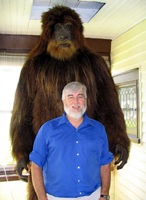
+++
End of the interview. Oh, and you are already at Cryptomundo. Thank you for visiting and come again often to explore the adventurous, exciting and passionate world of cryptids. Please buy one of my books today for a relative or lover to put under your holiday tree to make it possible for me to keep doing this! Those books are my ticket to remaining a professional cryptozoologist. Thank you – LC
About Loren Coleman
Loren Coleman is one of the world’s leading cryptozoologists, some say “the” leading living cryptozoologist. Certainly, he is acknowledged as the current living American researcher and writer who has most popularized cryptozoology in the late 20th and early 21st centuries.
Starting his fieldwork and investigations in 1960, after traveling and trekking extensively in pursuit of cryptozoological mysteries, Coleman began writing to share his experiences in 1969. An honorary member of Ivan T. Sanderson’s Society for the Investigation of the Unexplained in the 1970s, Coleman has been bestowed with similar honorary memberships of the North Idaho College Cryptozoology Club in 1983, and in subsequent years, that of the British Columbia Scientific Cryptozoology Club, CryptoSafari International, and other international organizations. He was also a Life Member and Benefactor of the International Society of Cryptozoology (now-defunct).
Loren Coleman’s daily blog, as a member of the Cryptomundo Team, served as an ongoing avenue of communication for the ever-growing body of cryptozoo news from 2005 through 2013. He returned as an infrequent contributor beginning Halloween week of 2015.
Coleman is the founder in 2003, and current director of the International Cryptozoology Museum in Portland, Maine.
Filed under Abominable Snowman, Alien Big Cats, Almas, Artifacts, Bigfoot, Books, Breaking News, Cryptomundo Exclusive, Cryptotourism, CryptoZoo News, Cryptozoologists, Cryptozoology, Evidence, Expedition Reports, Eyewitness Accounts, Hoaxes, Lake Monsters, Loch Ness Monster, Media Appearances, Men in Cryptozoology, Mystery Cats, New Species, Photos, Pop Culture, Public Forum, Reviews, Sasquatch, Sea Serpents, Thylacine, Yeti